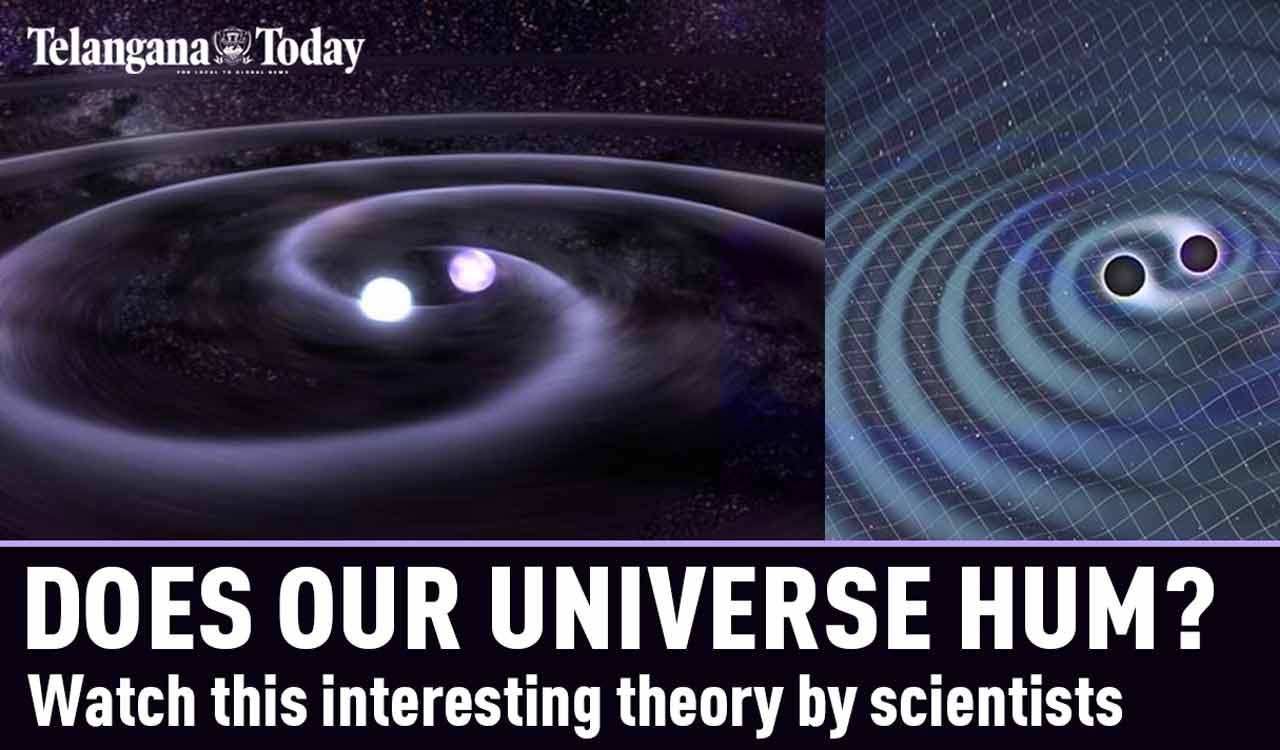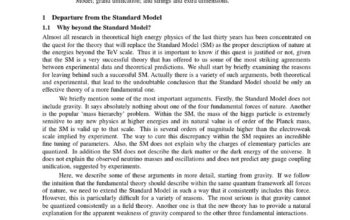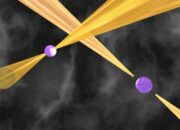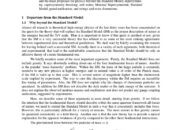In the vast expanse of the cosmos, one might ponder whether the universe, in its profound intricacies, has a melody of its own. Could it be that celestial bodies, through their dynamic interactions, contribute to an ethereal symphony? The recent observations of twin black holes merging and emitting gravitational waves offer a tantalizing glimpse into this notion. These events suggest not only the existence of gravitational waves but also that the universe resonates with a nuanced harmony, echoing the profound dynamics of its fundamental components.
At the epicenter of this phenomenon are black holes—regions of spacetime where gravity exerts an influence so intense that nothing, not even light, can escape their grasp. When two black holes entwine in a gravitational dance before ultimately merging, they generate ripples across the fabric of spacetime. These ripples, known as gravitational waves, were first predicted by Albert Einstein in 1916 as a consequence of his General Theory of Relativity. While thought to be a mere theoretical construct for decades, the first direct detection of gravitational waves by the LIGO observatory in 2015 marked a monumental triumph for modern astrophysics and a validation of Einstein’s groundbreaking work.
The mechanisms that govern the production of gravitational waves during black hole mergers are deeply rooted in the principles of general relativity. As two black holes orbit each other, their immense masses distort spacetime, leading to the emission of gravitational waves. This emission grows increasingly intense as the black holes spiral closer, ultimately culminating in a cataclysmic merger that generates a substantial burst of energy observable across cosmic distances. These waves propagate outward at the speed of light, carrying with them vital information about their origins and the properties of the black holes involved.
The study of twin black holes and their gravitational emissions raises several intriguing questions. For instance, what do these waves reveal about the very nature of spacetime? The patterns of the waves—their frequency, amplitude, and duration—offer clues regarding the masses and spins of the black holes, as well as their distance from Earth. Analyzing this data allows astrophysicists to infer the evolutionary histories of these enigmatic entities, shedding light on their formation and subsequent coalescence. Yet, even with the state-of-the-art detectors like LIGO and Virgo, researchers face challenges in deciphering the complex interplay of these emissions.
As the quest to understand gravitational waves deepens, one must consider: what implications do these cosmic harmonies have for our broader understanding of the universe? The notion that the universe “hums” in response to the motions of black holes invites intriguing philosophical inquiries about the nature of reality itself. Does the harmony of gravitational waves dictate the pathways of galaxies and stars? Or are they simply byproducts of the capricious dance of massive celestial objects? This interplay between observation and metaphysical speculation illustrates the dual nature of modern astrophysics—a discipline that straddles the line between empirical investigation and abstract theorization.
Moreover, the discovery of gravitational waves presents both opportunities and challenges in the realm of astrophysics. The ability to detect such phenomena provides a new avenue for studying the universe, one that is not limited to traditional electromagnetic observations. Gravitational waves open a window to phenomena that have hitherto remained hidden. However, this newfound capability also imposes rigorous demands on researchers, who must continuously refine their methodologies to distinguish genuine signals from background noise and other sources of interference.
Encounters with multiple black holes in systems such as quasars or the centers of galaxies further complicate this narrative. As they interact in gravitationally bound systems, the potential for intriguing dynamics escalates. In such scenarios, can we anticipate that the gravitational waves emitted will compose a rich tapestry of signals? The challenge then lies in untangling these complex frequencies, which could potentially encode the interactions and mergers of countless black holes—a task that will require not only advanced technology but also innovative theoretical frameworks.
In a dual pursuit of knowledge, researchers must ask how the enhancements in our understanding of gravitational waves could lead to the elucidation of fundamental physical laws. Could these phenomena provide insights into elusive components of the cosmos, such as dark matter or dark energy? The fabric of the universe is interwoven with mysteries that remain only partially revealed, prompting scientists to adopt a holistic approach when grappling with the implications of their findings. The harmonic vibrations of twin black holes merging might serve as a metaphor for the interconnectedness of all things—a reminder that the cosmic symphony is still unfolding.
The voice of the universe, conveyed through the vibrations of gravitational waves, compels humanity to reconsider its role in the cosmos. In contemplating the implications of these findings, we are drawn into a profound narrative about existence itself. The pursuit of knowledge about twin black holes and their gravitational emissions represents a journey toward not only understanding the mechanics of the universe but also an exploration of our place within it. As researchers continue to probe the depths of spacetime, one wonders: what new harmonies await discovery in the vastness of the cosmos? Perhaps the universe, in all its complexity, will continue to reveal its secrets, humming a cosmic tune that resonates with our very essence.












